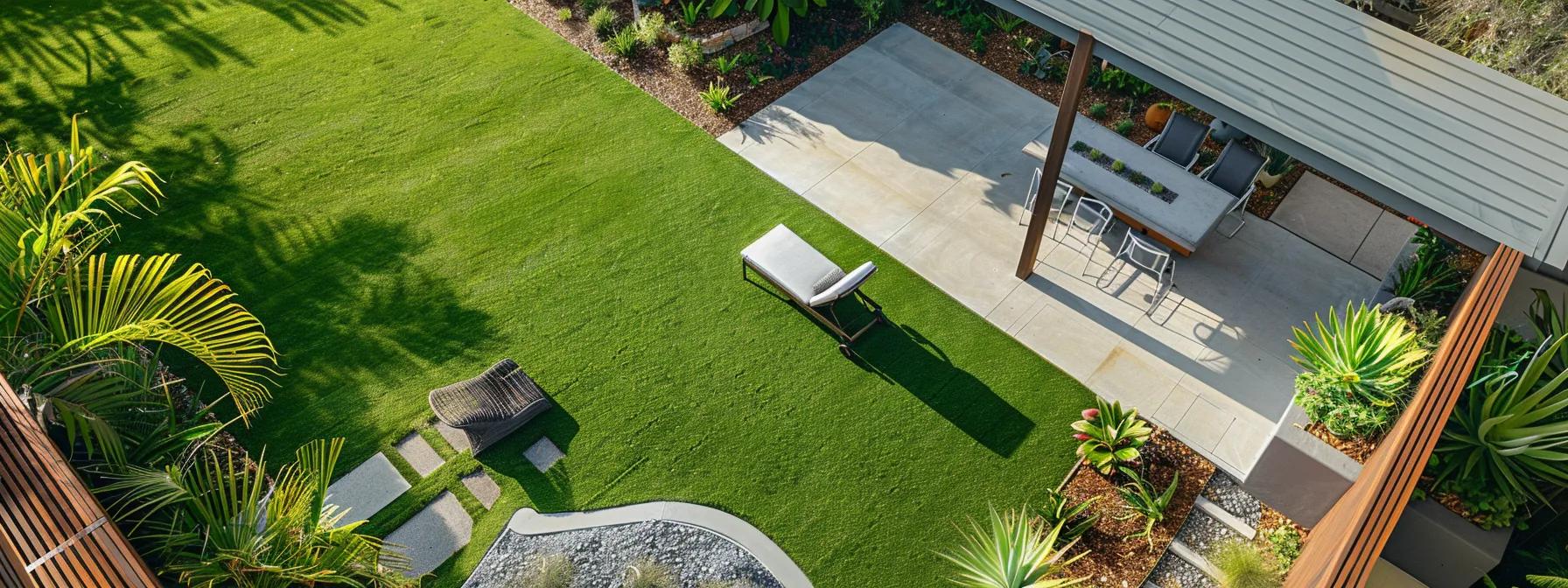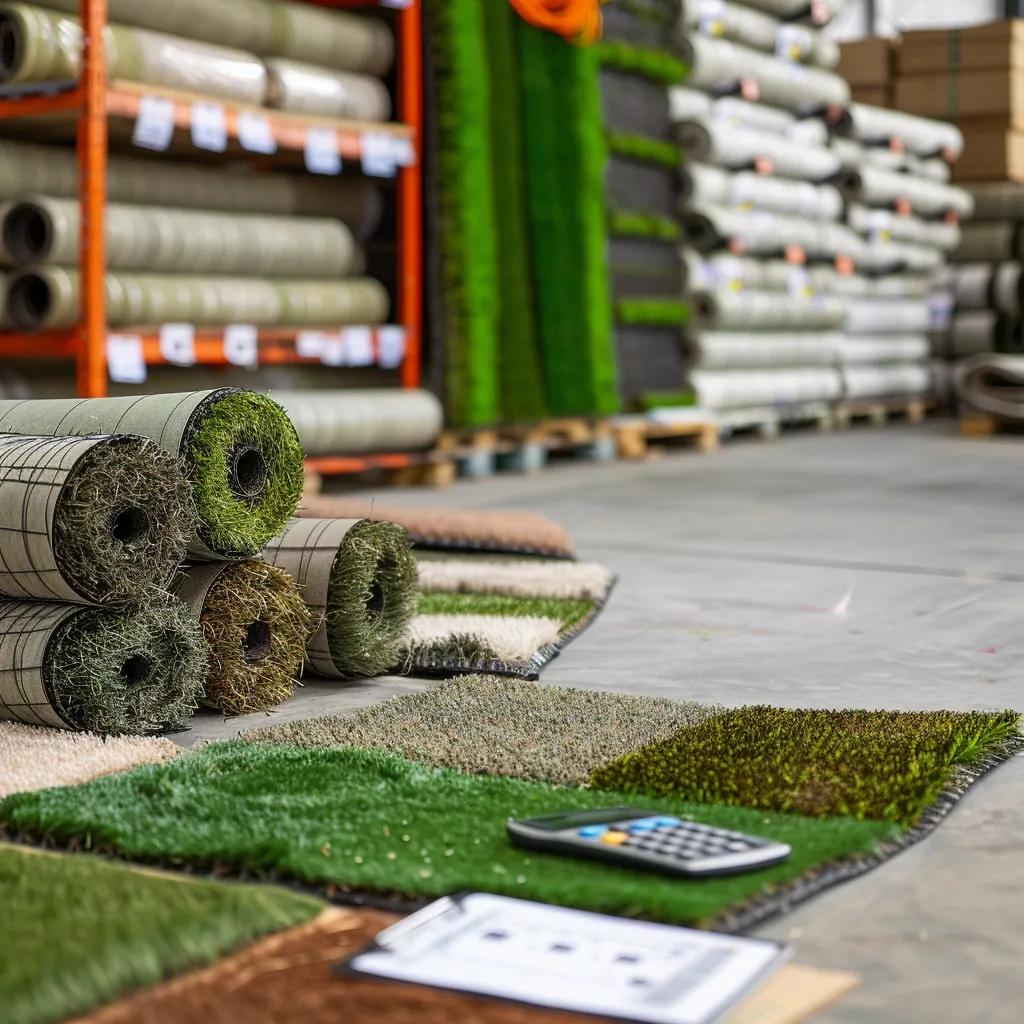
Imagine cutting your lawn bills in half while enjoying a perfectly green yard all year round—buying artificial grass wholesale can make that a reality for homeowners. In this guide, you’ll discover how wholesale turf suppliers empower you to save on material costs, choose from premium turf types, handle DIY installation, and maintain a lush lawn without hassle. We’ll cover:
Let’s dive into how you can transform your landscape with top-grade turf straight from the source.
Wholesale turf suppliers specialize in supplying bulk quantities of artificial grass at direct-to-consumer prices, ensuring homeowners access professional-grade products without the markups typically associated with middlemen. By purchasing wholesale, you unlock superior value and a wider range of products tailored for residential landscapes.

Wholesale pricing typically runs 20–40% lower than retail rates because suppliers bypass distribution layers and sell turf in bulk rolls. This direct model reduces per-square-foot costs and translates into significant overall savings—especially for large yards.
These savings free up budget for quality infill materials and professional tools, setting the stage for a durable, high-performance lawn.
Wholesale artificial grass can offer significant cost savings compared to retail options. This is primarily due to the elimination of distribution layers and the ability to purchase in bulk, which reduces the per-square-foot cost. These savings can be substantial, especially for larger projects, making it an attractive option for homeowners looking to reduce their landscaping expenses.
Wholesale turf suppliers often hold products to installer-grade standards, offering features like UV-stabilized fibers and permeable backings that exceed many consumer-grade retail lines. These attributes provide:
| Entity | Attribute | Value |
|---|---|---|
| UV Resistance | Lifespan Protection | Fibers rated up to 10 years without fading |
| Drainage System | Water Permeability | 30+ inches per hour per square foot |
| Fiber Durability | Tensile Strength | 25–35 ounces face weight for high-traffic areas |
| Warranty Coverage | Manufacturer Guarantee | 8–15 years on product and installation integrity |
Installer-grade turf resists matting and discoloration, delivering a consistently lush appearance in residential settings.
Wholesale turf often meets installer-grade standards, offering features like UV-stabilized fibers and permeable backings. These attributes contribute to the turf’s longevity and performance, ensuring it can withstand various environmental conditions and heavy use. This results in a consistently lush appearance in residential settings.
Yes, wholesale turf suppliers provide homeowners with the full catalog of synthetic turf options—no installer credentials required. You’ll find:
Wholesale turf suppliers carry a comprehensive selection of materials and designs to suit every homeowner’s needs, from low-pile, budget-friendly options to premium blends engineered for maximum realism and durability.
Polyethylene turf balances softness and strength, nylon delivers superior resilience under heavy traffic, and polypropylene offers cost-effective performance for decorative areas.
| Entity | Attribute | Value |
|---|---|---|
| Polyethylene | Texture & Softness | Soft, natural feel; excellent blade resilience |
| Nylon | Wear Resistance | Highest durability; ideal for sports fields and play areas |
| Polypropylene | Cost Efficiency | Most economical; best for patios, low-traffic accent zones |
Selecting turf for pets, play, or heavy use involves choosing appropriate pile height, drainage capacity, and fiber resilience:
Before ordering wholesale turf, evaluate three critical attributes:
Considering these features together ensures your lawn stays lush, safe, and functional throughout seasonal changes.
Understanding wholesale pricing structures gives homeowners transparent insight into total project expenses, from turf rolls to installation materials.
On average, wholesale artificial grass ranges from $2 to $6 per square foot for medium to high-grade products, with price tiers based on fiber quality and pile height:
| Entity | Attribute | Value |
|---|---|---|
| Economy Turf | Price per sqft | $2.00 – $3.00 |
| Mid-Range | Price per sqft | $3.50 – $4.50 |
| Premium | Price per sqft | $5.00 – $6.00 |
Bulk orders over 1,000 sq ft often unlock additional discounts, driving overall costs even lower.
DIY installation can reduce labor expenses—typically $3–$8 per square foot—while professionals charge $5–$12 per square foot including labor.
Choosing the DIY route saves roughly 40–50% of labor costs, especially when you follow a structured installation plan.
Beyond turf, plan for:
Homeowners can achieve professional results by following a clearly defined installation process, using quality tools and materials recommended by wholesale suppliers.

A proven six-step installation process delivers a smooth, durable surface:
A concise table outlines must-have items for any DIY turf project:
| Entity | Attribute | Value |
|---|---|---|
| Plate Compactor | Purpose | Compress base to 95% compaction level |
| Utility Knife | Use | Trim turf edges and cut seam tape |
| Landscape Rake | Function | Level base layer and distribute stone |
| Turf Brush/Broom | Need | Groom fibers and settle infill |
| Seam Tape & Glue | Role | Create invisible seams between rolls |
Securing professional-grade tools ensures precision and longevity, preventing base shifting and seam separation.
By steering clear of these errors, homeowners preserve both appearance and performance.
Routine care keeps synthetic turf looking fresh and maximizes its service life, combining simple tasks with periodic inspections.
Effective odor control involves:
Consistent care and timely repairs keep your synthetic lawn performing like new year after year.
Investing in wholesale artificial turf not only enhances your home’s appearance but also contributes to water conservation and reduced chemical use.
Synthetic lawns eliminate the need for irrigation, cutting outdoor water consumption by up to 70% annually. Without natural grass, you also forego fertilizers, herbicides, and pesticides—protecting local waterways and soil health.
A manicured, evergreen lawn creates instant curb appeal, boosting your home’s first-impression factor. Studies show well-maintained synthetic landscapes can add 5–10% to property value, thanks to year-round aesthetics and minimal upkeep.
Wholesale turf suppliers provide products tested for lead-free, non-toxic materials, and antimicrobial backings to inhibit bacteria growth. These safety features ensure a clean, mud-free play surface that meets residential health standards.
Selecting a reliable supplier guarantees quality, timely delivery, and support throughout your project—critical factors for homeowner success.
When evaluating suppliers, confirm they offer:
Start by submitting your yard dimensions and preferred turf style via the supplier’s sample request form. A reputable wholesale supplier will:
Having real samples in hand and transparent pricing helps you finalize your landscaping plan with confidence.
Wholesale suppliers typically offer:
Completing these steps empowers you to select, purchase, install, and maintain professional-grade artificial grass directly from wholesale turfsuppliers. By embracing bulk pricing, understanding material features, and following clear installation and care guidelines, you’ll enjoy a vibrant, low-maintenance lawn that enhances your home’s appeal and value. Ready to transform your yard? Request free samples, compare quotes, and explore our full wholesale catalog today.